In celebration of the 50th anniversary of Dungeons & Dragons, the design team at Wizards continues to look backwards at the stories that helped make the game famous during its golden years. Their newest adventure anthology, Quests From The Infinite Staircase, follows in the footsteps of Tales From The Yawning Portal by taking six classic adventures from the game’s 1980’s heyday and revamps them for both Fifth Edition and a more modern audience. Unlike Yawning Portal, which stuck with the mostly high fantasy stories of yesteryear, Infinite Staircase uses some of the more exotic tales from that era. In here are stories of forbidden love in a peaceful garden, the horrors entombed in ancient pyramids, and robots. Yes, robots. And they’re from space. And the future. It’s weird.
In any case, Quests From The Infinite Staircase represents a big step for Dungeons & Dragons in addressing the parts of its history that are, well, 50 years old. From co-creator Gary Gygax’s myriad issues (two of his adventures feature here) to the orientalist tropes that pervade representations of non-European cultures, there’s always been a lot to unpack when going back into the D&D archives. And with Quests, I think the team did an admirable job adapting these rough gems without losing the adventure and creativity at their core.
WARNING: BELOW REVIEW CONTAINS SPOILERS
Climb The Staircase
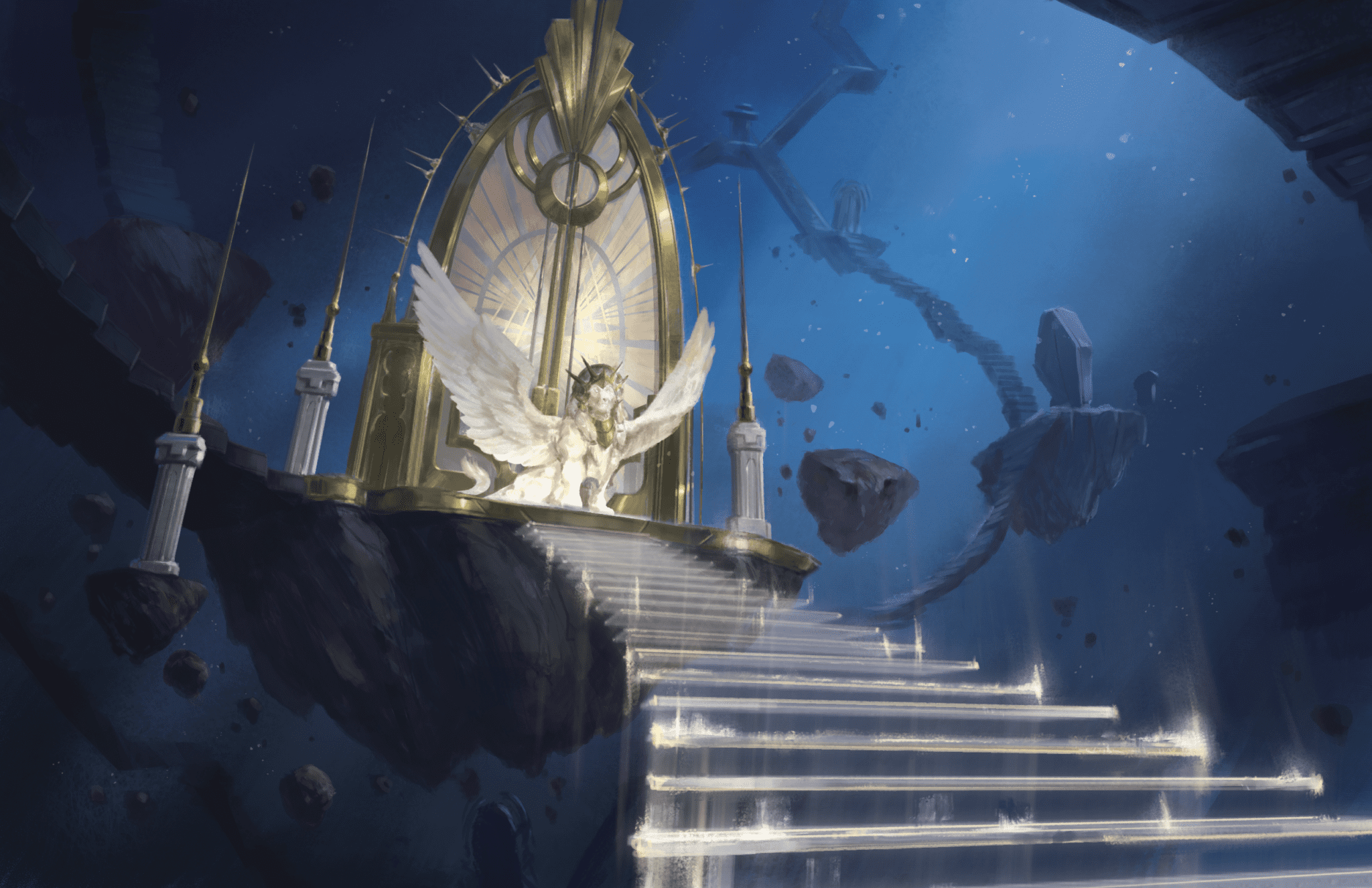
Each of the adventures in Quests From The Infinite Staircase can be run as a stand-alone story set in a number of worlds, though some may be harder than others to fit into currently running campaigns. For DM’s who need some framing help they can use the Infinite Staircase itself, a magical and multiversal stairway that stretches from your dreams into infinite worlds. It’s controlled by Nafas, the big purple genie from the cover, who acts as a patron and quest giver that can send players through the various magical doorways that contain each adventure. It’s not the most fleshed out hub they’ve created, but it’s creatively designed and something I can see DM’s finding use for in more whimsical or weird adventures.
The Lost City
Original Publication: 1982
Author: Tom Moldvay
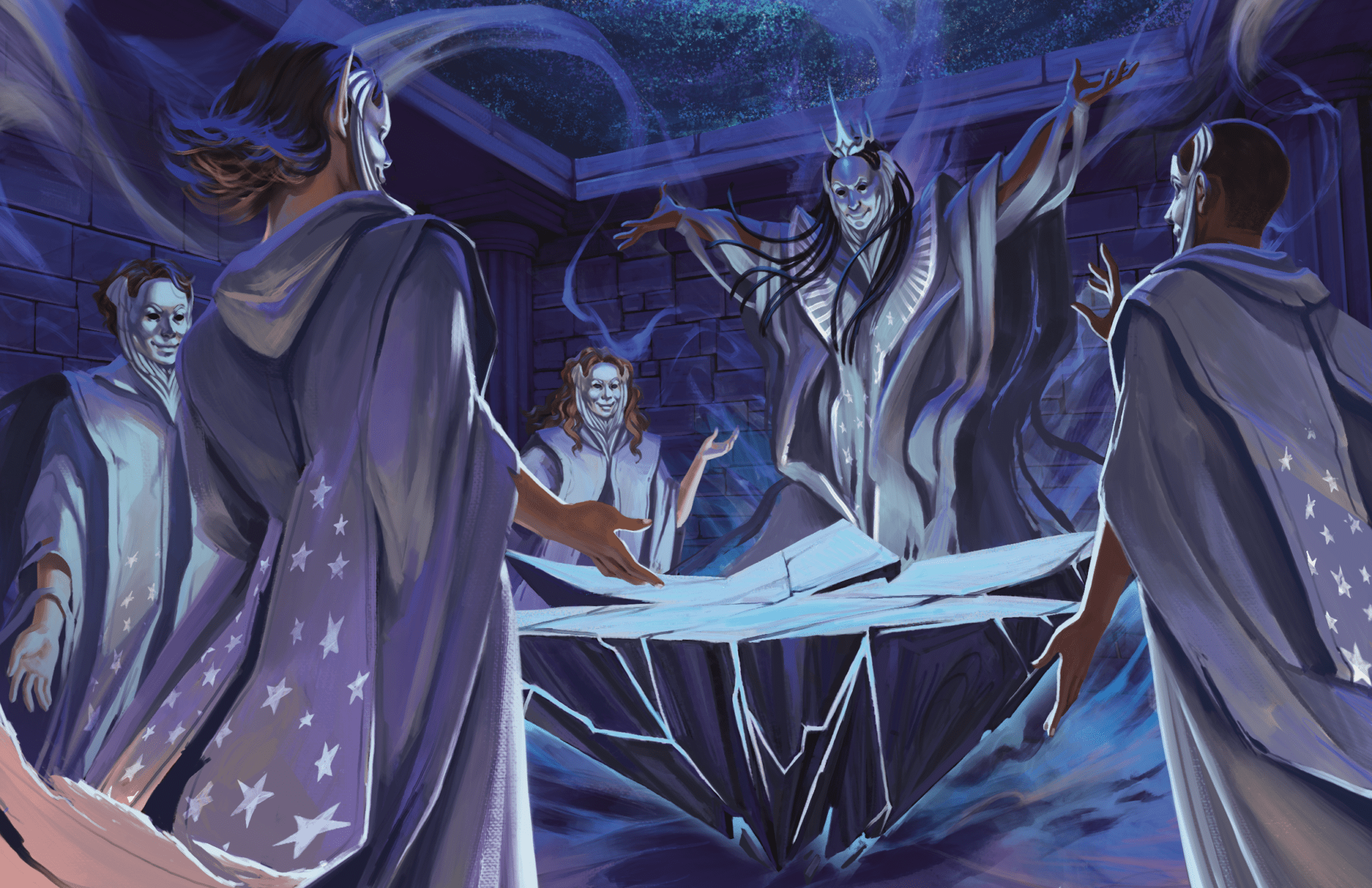
“The Lost City” is a pretty straightforward dungeon crawl down the different levels of an ancient and half-buried ziggurat. The “hook” here is simply the exploration of it as well as the strange Cynicidean civilization that inhabits of the titular lost city. Three factions vie for control here: The Guardians of Gorm (justice guys who love storms), The Mages of Usamigaras (nice guys who lie constantly), and the Warriors of Madura (basically big fans of Wonder Woman). They’re challenged by the Cult of Zargon, who worship a big ugly guy who lives in a slime pit and who helped destroy the old civilization. Throughout the adventure, you’ll meet with the different factions and have the chance to work with them as well as possibly join them, which comes with benefits depending on your choice. You don’t HAVE to join them and there’s no penalties for not joining, but it’s a fun little bit of flavor.
There isn’t much “story” to this one, instead you’re simply doing the old school room-to-room travel, fighting whatever comes up, dealing with traps, getting weird treasure. The different tapestries, mosaics, and tombs help reveal what happened to the Cyndiceans and hint at who Zargon is and what is in store for the characters. The base adventure ends with a fight against Darius, the leader of the Cult of Zargon, and an escape from the ziggurat. However, like the original, “The Lost City” allows you to enter the bottom of the Ziggurat as well as the Underground City itself. Here the story opens up a tad and allows for more adventures, most prominently being able to fight Zargon himself. He’s a big nasty one-eyed aberration, not a true god, who presents a way more impactful final boss than Darius and his cultists.
What’s Changed:
Not much got shifted between the original 1982 adventure outside of the mechanical changes. The way dungeons work has changed quite a bit in the intervening years. There’s no more wandering monsters, treasure has changed, and there’s in general way more writing being done to weave more of a story into the dungeon. The factions get a bit more fleshing out and their initiations are more flavorful, though they lose the more stringent requirements of the original. Zargon get a little more personality (he won’t really try against adventurer’s under a certain level who he feels aren’t a threat) as well as a massive buff to his abilities thanks to a much more complex stat block in 5E.
When A Star Falls
Original Publication: 1984
Authors: Graeme Morris
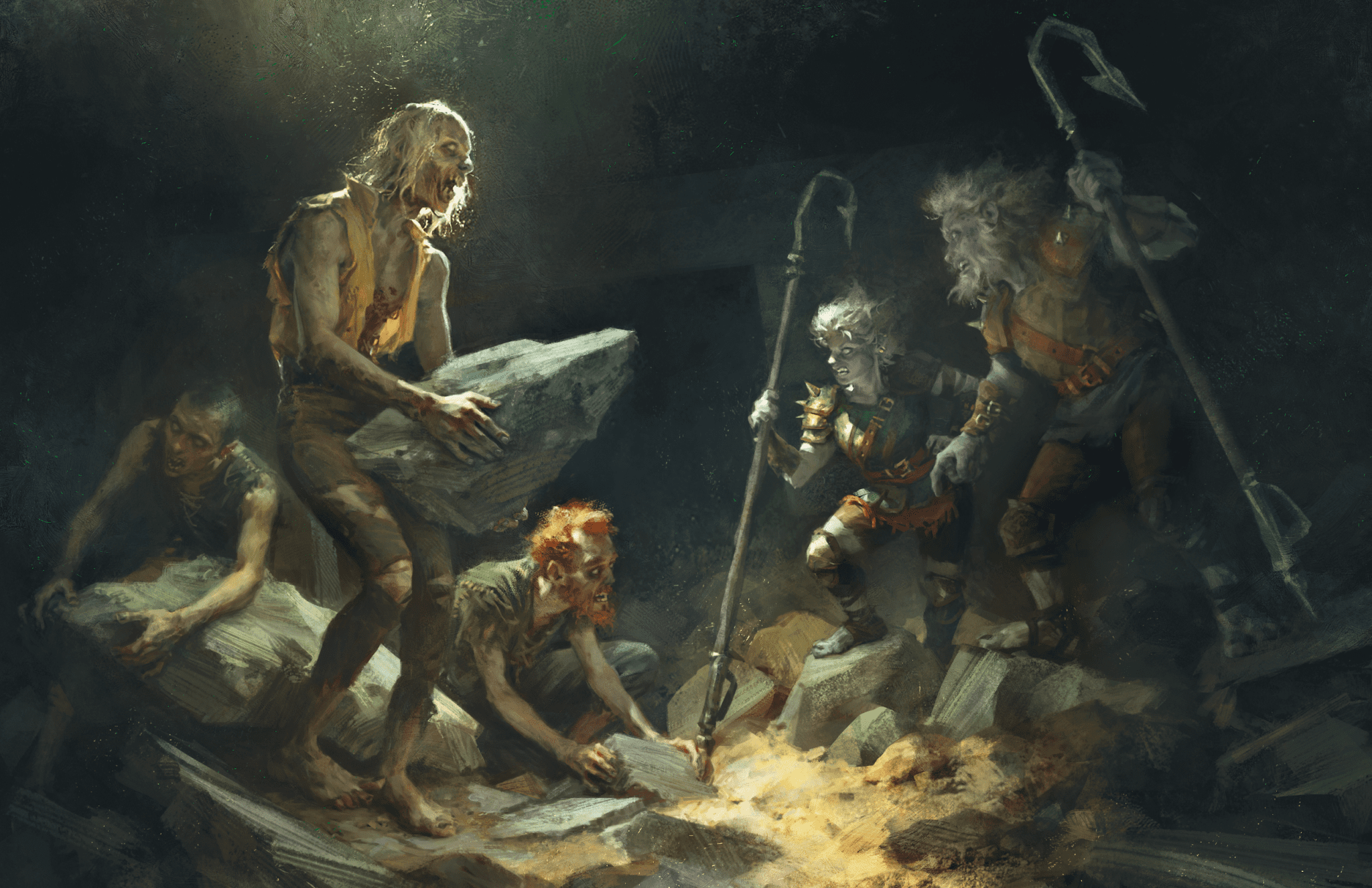
“When A Star Falls” is the closest in form to more modern adventures of all the revamped modules in Quests From The Infinite Staircase. There’s multiple locations, a few branching pathways, and equal opportunities for roleplay and combat across it. It starts with the part encountering a strange psychic monster called a “memory web” that imbues them with the memories of envoys from the sage Shalfey, learning of the arrival of the titular falling star and the urgency of getting to it before “evil” does. They’ll meet with Derwyth, an eccentric local Druid that can help them find the star (for a price), a group of intelligent giant beavers and their hunter friends, and enter the lair of the Derro (who first appeared in another adventure in this anthology “The Lost Caverns Of Tsojcanth.” Then its on to the Tower of the Heavens, which is kind of like a community college version of Candlekeep where Shalfey lives, but works as a fairly well fleshed out “town” to explore and give some respite from the adventure. The final dungeon is the Forge of the Kagu-Svirfneblin, where you can trade the star for some books of prophecy that Shalfey has been hunting. And then a dragon attacks…because sometimes you need something more impactful to finish a story.
What’s Changed:
The biggest change that sort of hurts this adventure is the minimization of wilderness rules in newer editions of D&D, since the overland trek and the dangers of it are a big part of this adventure’s flow. Derwyth is a female druid now instead of a male one and they took away the awesome gorilla butler from the original story. This story also adds in a change that definitely reflects the ever so slightly softer edge that D&D has acquired since the eighties by replacing the Derro’s slaves with zombie thralls. Functionally it’s the same thing, but it makes the Derro SLIGHTLY less evil (though I’m not sure if necromancy is that much better than slavery).
Beyond The Crystal Cave
Original Publication: 1983
Author: David J. Brown, Tom Kirby, Graeme Morris
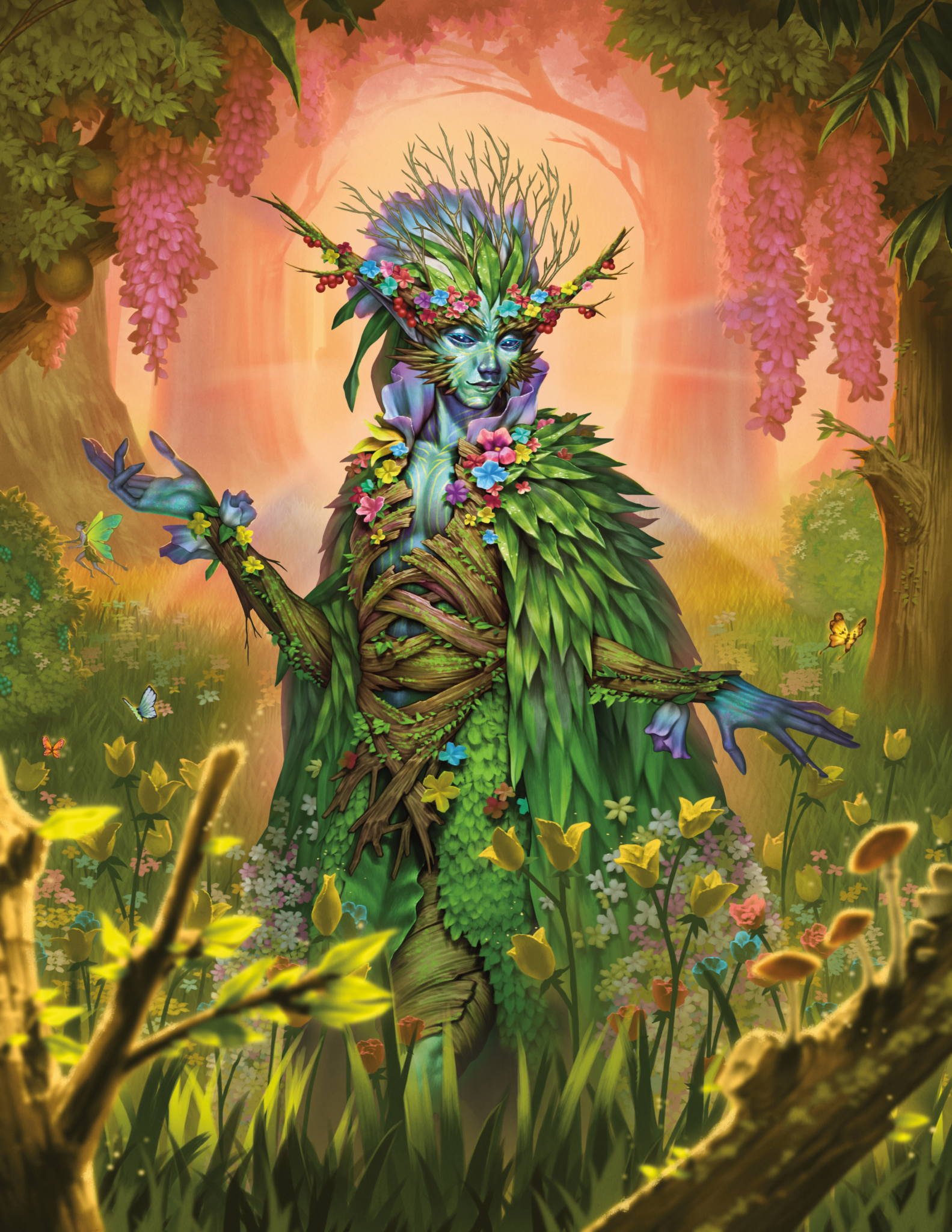
I’d say of all the stories included in this book, this is the one that’s gotten the most promotion and the most discussion. Partially because it’s got lesbians but mostly because it’s one of those rare D&D adventures that is built around avoiding violence. For Fifth Edition that’s a rarity (Wilds Beyond The Witchlight was the last time they tried it officially), though it’s not quite as unheard of as when the original version of this story published. It takes place in an enchanted garden in the Feywild, where two lovers named Julianna and Orlando have absconded from their home and warring families to find peace with each other. The whole thing is basically one big Shakespeare reference (which I love).
The adventure itself is…fine once you get beyond the novelty of it. D&D isn’t well built for non-combat stories and once you remove them it starts to feel a bit like a guided tour as opposed to a proper adventure. Luckily the cast of characters are genuinely well fleshed out (especially compared to the original) and the whole thing has this Lisa Frank/Princess of Gemworld aesthetic straight out of its 1980’s origin: multicolored unicorns, a playful river dragon, plenty of crystals. It’s almost kitsch and, frankly, I love that.
What’s Changed:
Unavoidable system issues aside, The Fifth Edition is a lot more friendly to non-combat play than AD&D was back in 1983. You feel way less strain against the medium than in the original, and the greater space for writing and character work is very much to the book’s benefit. Characters have gotten tweaking to reflect a more diverse game, with the wizard Porpherio replaced with a female archmage Porphura and two men-at-arms sent to find the missing couple are now themselves a couple. The nature of the garden has also changed significantly with its move to the Feywild thanks to a deal cut with a fey called The Gardener. This takes it a little out of its rooting in the real world but does help explain some of the magic used that goes a tad past what even a normal wizard might be able to cast.
Pharaoh
Original Publication: 1980
Authors: Tracy and Laura Hickman
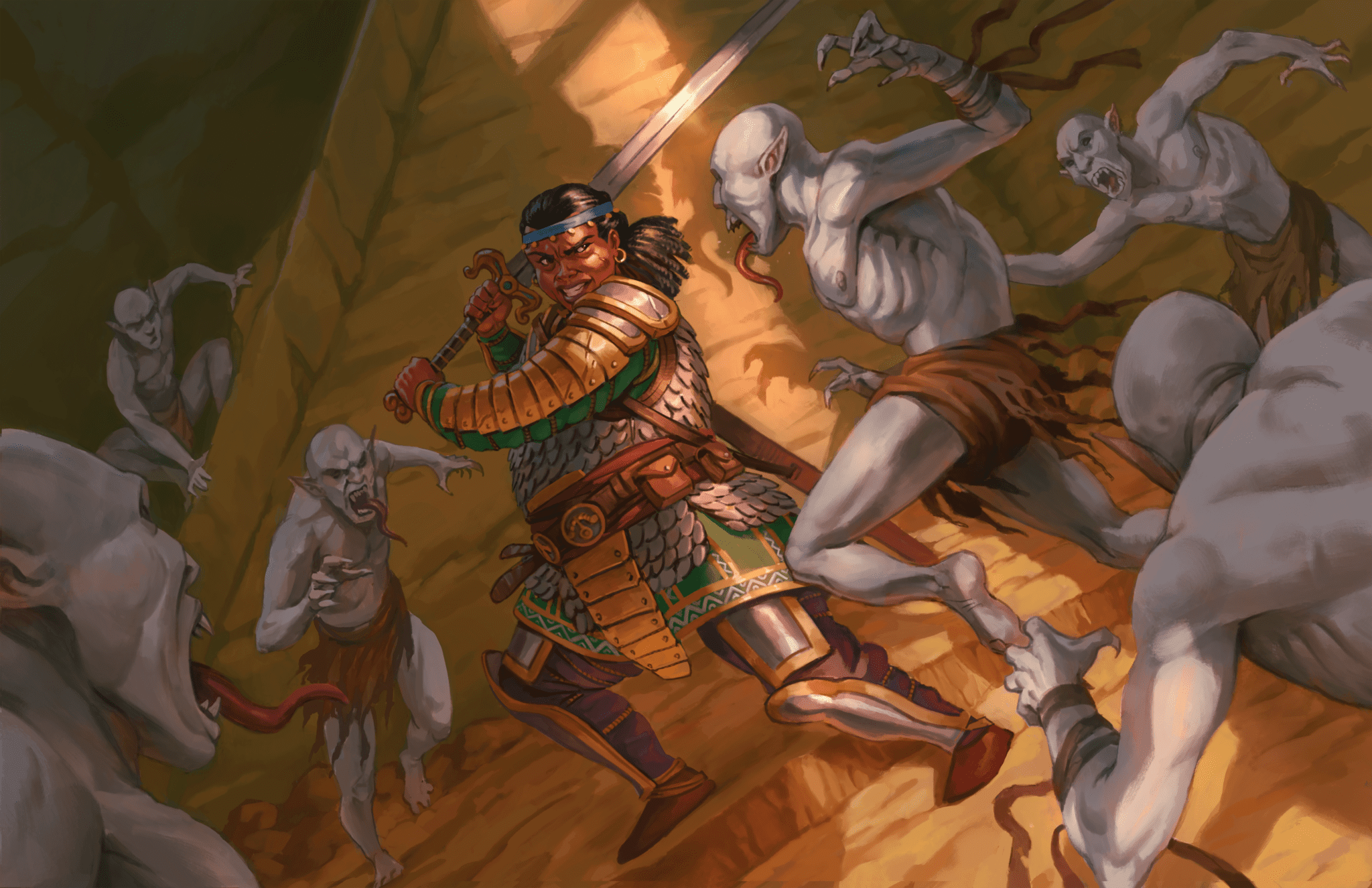
Authored by Dragonlance co-creator Tracy Hickman and his wife Laura, “Pharaoh” is another fairly standard dungeon crawl through another pyramid (yes there’s two pyramid-themed adventures included in this anthology), but this one steals heavily from Egyptian aesthetics and adventures. It’s a total throwback to the pulpy vibes that were the core of old school Dungeons & Dragons. After braving the desert of Desolation, players are met with the Ghost of Amun Sa, the former Pharoah who tasks them with retrieving his staff and star-gem from his tomb to remove the curse on the land. Unfortunately these magical McGuffins are trapped at the top of a massive tomb complex filled with bandits, mummies, a whole maze, and a pseudo-lich with a serious grudge and a nice hat. The Hickmans were good at weaving story into their crawl and that’s well retained in the revamp, giving the players plenty of engagement and unique encounters in between two-fisted mummified action.
What’s Changed:
Of all the adventures in Quest From The Infinite Staircase, this one has had the biggest overhaul. As any fan of Indiana Jones could tell you, pulling on classic pulp fiction means also pulling in tropes that are a bit…outdated. The original version of “Pharoah” plays the Egyptian theme to the hilt using actual name of Egyptian gods and kinds that get replaced by fictional equivalents in the new version. The human characters in the classic story were members of a faith that was *basically* Islam, complete with dervishes that make up a good chunk of the enemies to be dealt with. They’ve been replaced with purely good archaeologists with no religious bent to them, and the “evil” Symbayans who hate all graven images (subtle) are now grave robbers with a bit more character.
The Lost Caverns Of Tsojcanth
Author: Gary Gygax
Original Publication: 1982 (based on a tournament adventure from 1976)
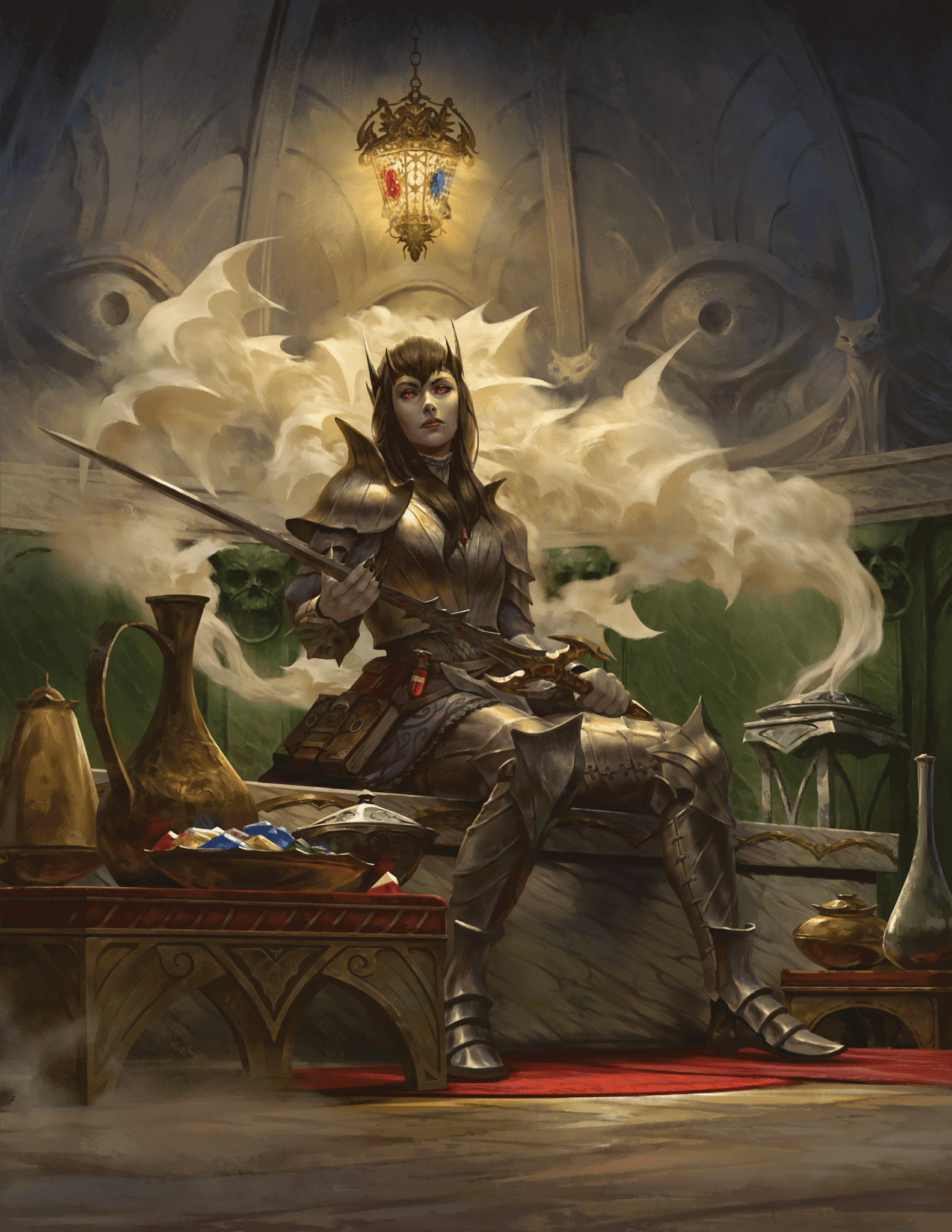
The final two adventures in the book at Gygax classics, both a lot more difficult than the previous adventures and both being rather bare bones dungeon crawls that got some much-needed beefing up by the current D&D team. “The Lost Caverns Of Tsojcanth” is a delve into the former lair of Iggwilv (also known as Tasha) to find the rumored treasure within. Like “Tomb of Horrors,” (which got a revamp back in Tales From The Yawning Portal), “Lost Caverns” is as classic a D&D dungeon as you can imagine. There’s dragons, bats, vegepygmy’s, genies, centaurs, and more all jumbled together. It’s not so much here to tell a coherent story and more set up as a challenge for your players. Can they solve this puzzle? Can they defeat the lightning breathing behir? Are they ready to challenge a kind of hot vampire in plate armor who acts as the final boss?
What’s Changed:
The only big changes that got added to “Lost Caverns of Tsojcanth” are more little tidbits about Iggwilv, her story, and her daughter the vampire. Gygax was never really one for “plot” or “characters” or “women,” so adding more of those to this was very much to the adventure’s benefit. There are also more opportunities for diplomacy and alternative solutions now that the design philosophies around monsters has changed since the original.
Expedition To The Barrier Peaks
Author: Gary Gygax
Original Publication: 1980
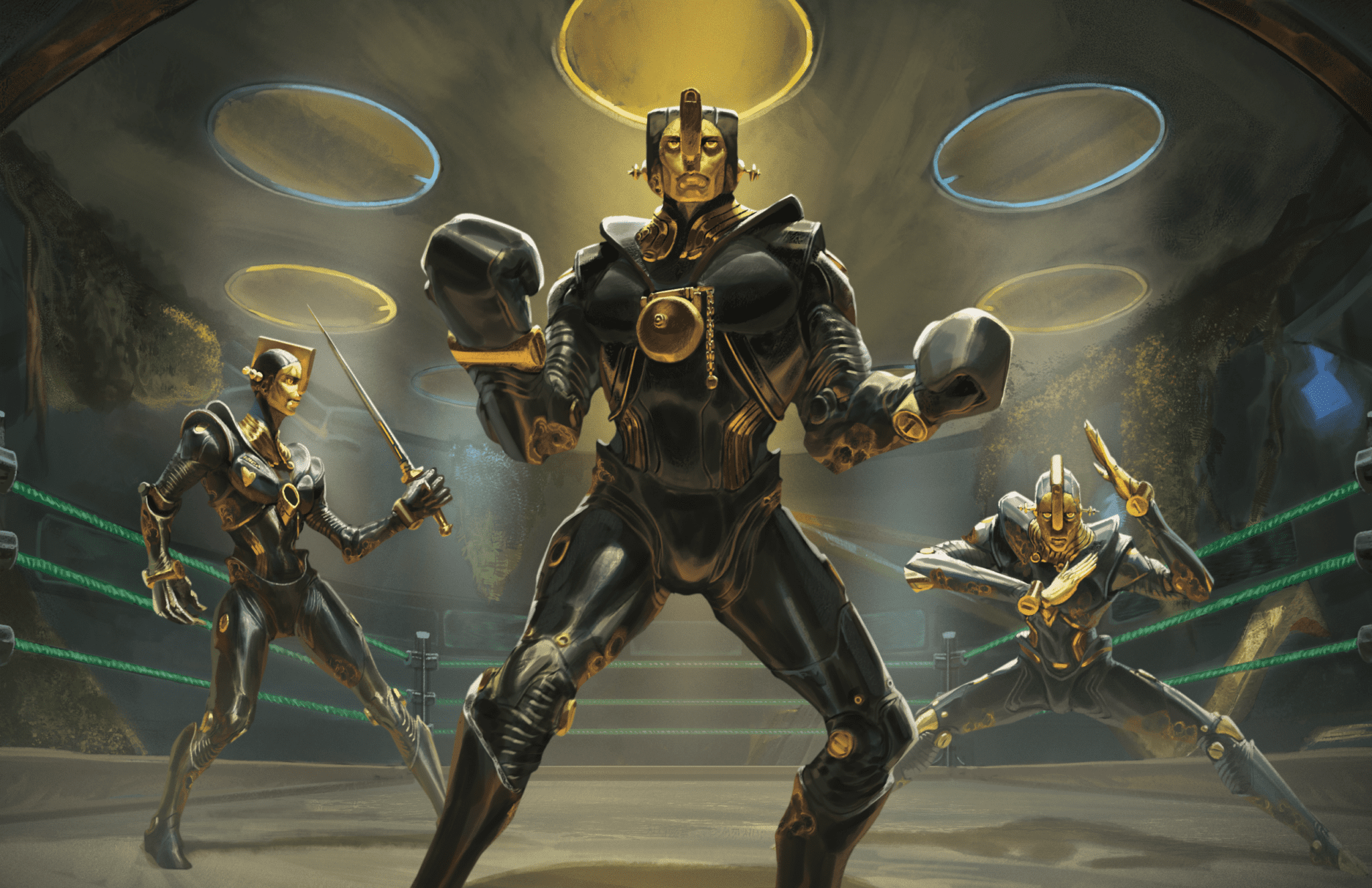
The final story in Quests from the Infinite Staircase is one of the most oddball adventures I’ve seen, and the fact that it’s considered a Gygax classic floored me. With the success of Gamma World and a demand for sci-fi games on the rise, Gary wrote this in 1980 to help give DM’s a model for adding more science to their fantasy. And it’s a certified trip.
Beginning in a mysterious cave that actually turns out to be the ship’s airlock, the characters enter into a ship that is somehow both from outer space AND the future. It’s got lasers, it’s got power armor, it’s got funny robots who get into fights over whether karate or boxing is better. The players need to get special cards in order to transverse the different levels of the ship and eventually escape, all guided by the APHELION supercomputer (Alphie) who has a personality straight out of a Douglas Adams story. On top of the weird sci-fi of the ship, you’ll also contend with other critters who found the ship (mind flayers, displacer beasts) and the famous Froghemoth Elder, which made its slimy debut in this story. Gygax is not a great sci-fi guy so don’t expect anything ground breaking, but this is a great way for DM’s to add some retro-weird into their campaign and just have some fun with a funky little dungeon.
For more about Expedition to the Barrier Peaks, check out Chris’s preview here.
What’s Changed?
The biggest change here is the inclusion of Alphie, and it’s the most significant change of anything in this book. In the original dungeon the characters only are driven to explore the ship in order to escape. It’s got that old fashioned “do it because it is the game” philosophy. The team added Alphie in as a way to give a bit more plot to things since he gives out mini-quests to the players to drive them along, passing out loot and cards for assistance. Of course he ALSO wants to murder everyone on the ship but hey, he’s very pleasant about it.
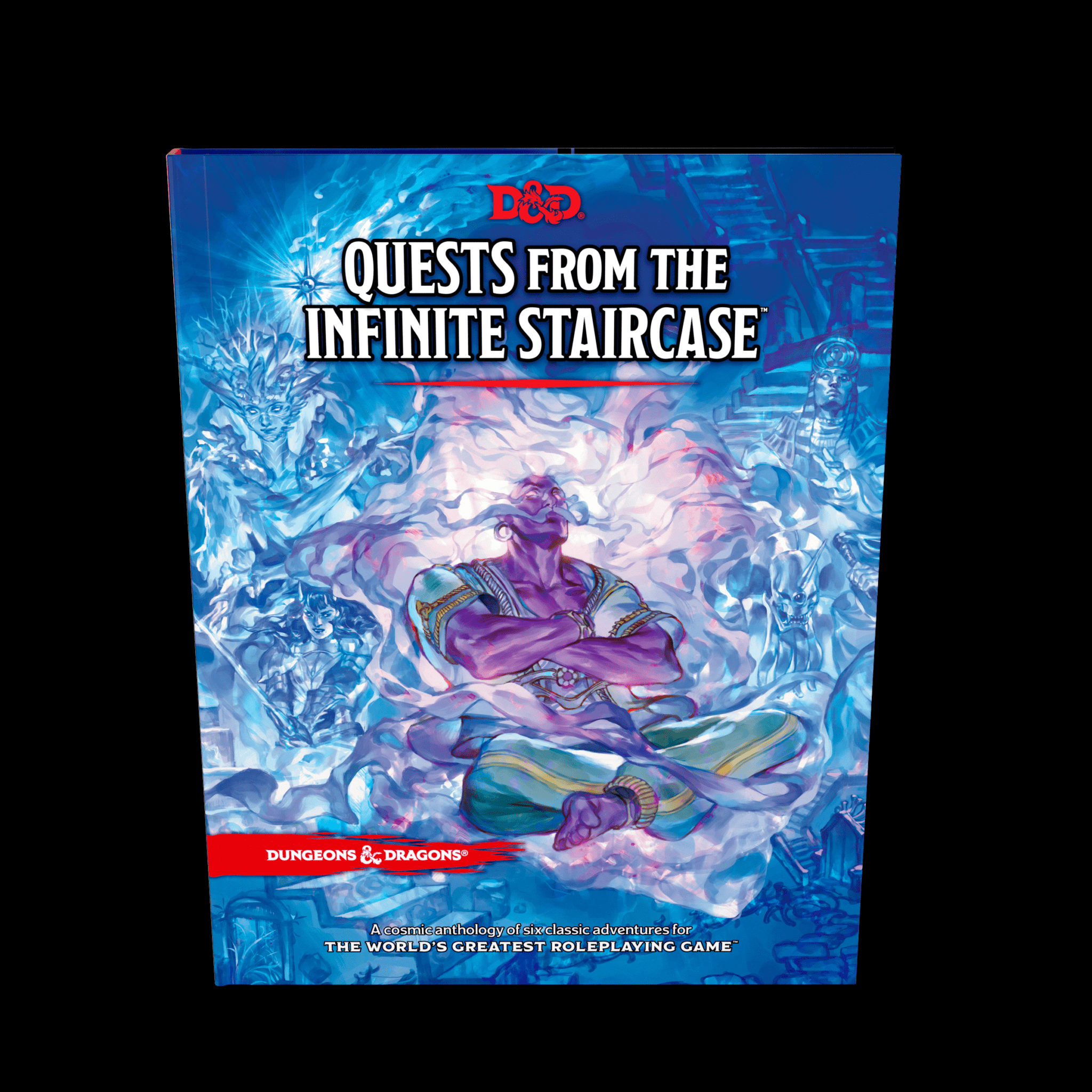
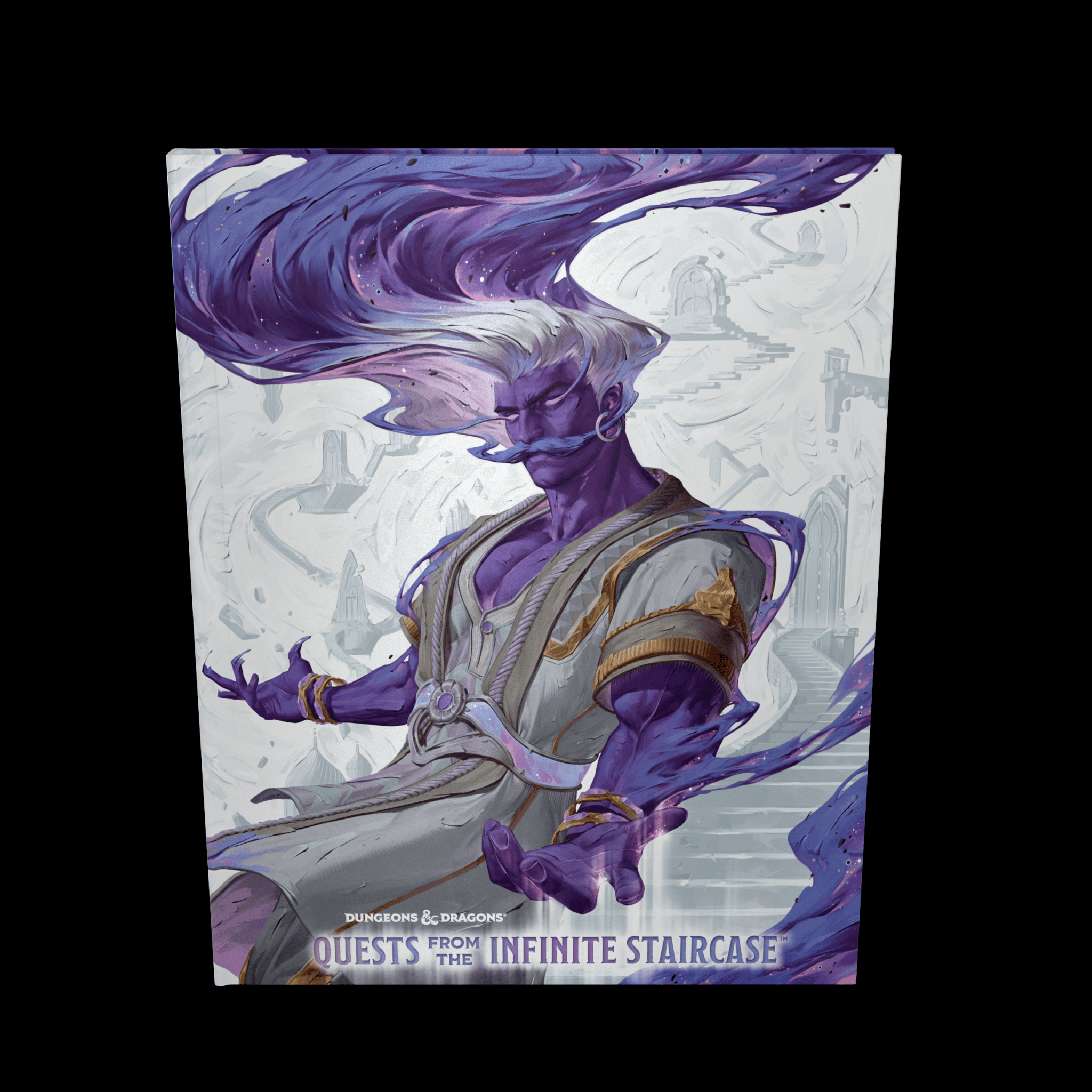
You can pre-order Quests From The Infinite Staircase before its release July 16, 2024. Fans who pre-ordered the digital/physical bundle at dndstore.wizards.com will be able to access the digital release on July 9th. You can also grab the alternate cover by Syd Mills exclusively at your FLGS. Hard copies of the title go at an MSRP of $59.99.
Images via Wizards of the Coast
Have strong thoughts about this piece you need to share? Or maybe there’s something else on your mind you’re wanting to talk about with fellow Fandomentals? Head on over to our Community server to join in the conversation!

